"Technology is a form of active storytelling, or reified myth. By encoding our ideas and intentions into machines, we make them literal constructors of the world. The stories we choose to tell with our technologies shape our environment, and its future."
James Bridle is a British artist and writer living in Athens, Greece. His artworks have been commissioned by galleries and institutions and exhibited worldwide and on the internet. His writing on literature, culture and networks has appeared in magazines and newspapers including Wired, Domus, Cabinet, the Atlantic, the New Statesman, the Guardian, the Observer and many others, in print and online. His formulation of the New Aesthetic research project - about a new of understanding the world and ourselves emerging from the constant interference between human and non human intelligence - has spurred debate and creative work across multiple disciplines.
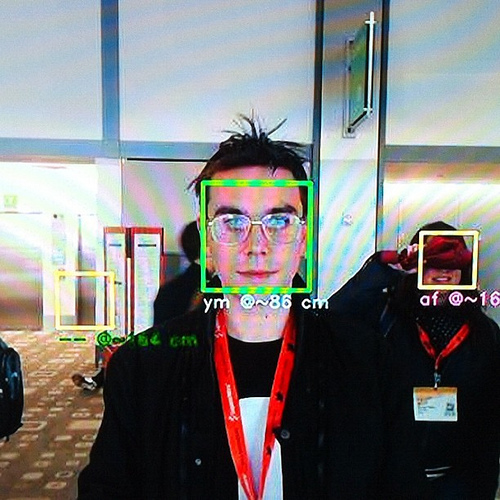
"We do not have to heedlessly accept the myths we are offered, because they can be retold and revivified in every generation. We can construct test cases, compose oppositional and adversarial examples, and catch exceptions. The myths are alive in our time."
“Neural networks are heavily employed in many advanced fields today, from medical research to social network analysis, and from generating news stories to playing the stock market. The ultimate goal of such networks is to gather and analyse sufficient volumes of data that we can predict, and ultimately control, the future.”
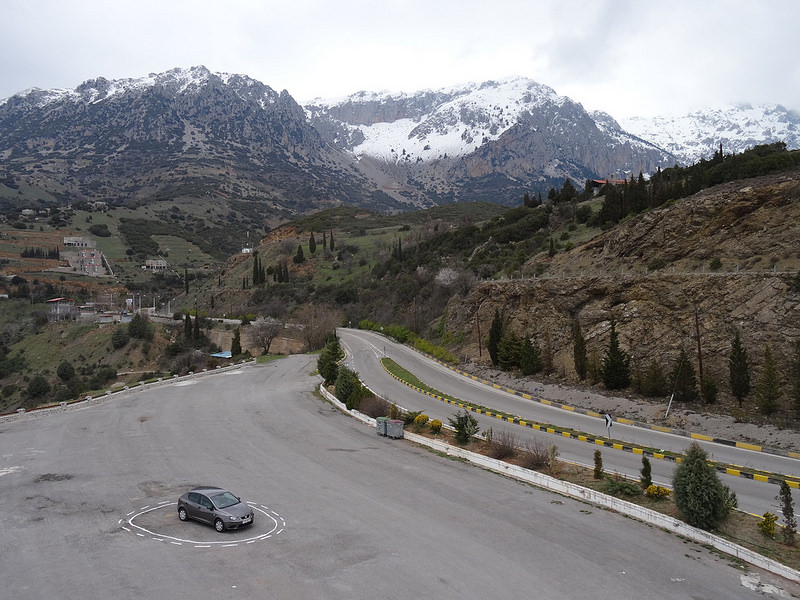
The Autonomous Trap is indeed a potential white hat or black hat op. In machine learning, this might be called an “adversarial example” – that is, a situation deliberately engineered to trick the system, so it can learn from and defend against such tricks in the future.
“I’m not really interested in what Tesla or VW want to do with a self-driving car – although I have a fairly good idea – rather, I’m interested in thinking through and with this technology, and proposing alternative pathways for it – such as getting lost and therefore generating new and unexpected experiences, rather than ones pre-programmed by the manufacturer. Moreover, I’m interested in the very fact that it’s possible for me to do this, and for showing that it’s possible, which is itself today a radical act.”
“To live in the world today is to live under, and within, a cloud. The planetary scale of the climate has finally been replicated in the planetary scale of our information systems, which encircle the globe. Both of these systems are, quite literally, out of control.”
“Despite occasional appearances in the day-to-day world, most people have never seen a drone in real life; in operation, their very point is invisibility. So we drew one. [...] There is much excitement in many quarters about the possibilities of civilian, journalist, and DIY drones, but for the moment they remain primarily a military and law-enforcement tool. (My ongoing work with balloons is in part an explicit attempt to counter the potential use of police drones against peaceful protest, providing both independent aerial imagery, and a barrage.) As a military tool, the Unmanned Aerial Vehicle (UAV) allows its operator to act with complete impunity, which in turn leads directly to the moral vacuum of kill lists and double-tap strikes. UAVs are the key infrastructure of the 21st Century shadow war: unaccountable, borderless and merciless conflicts.
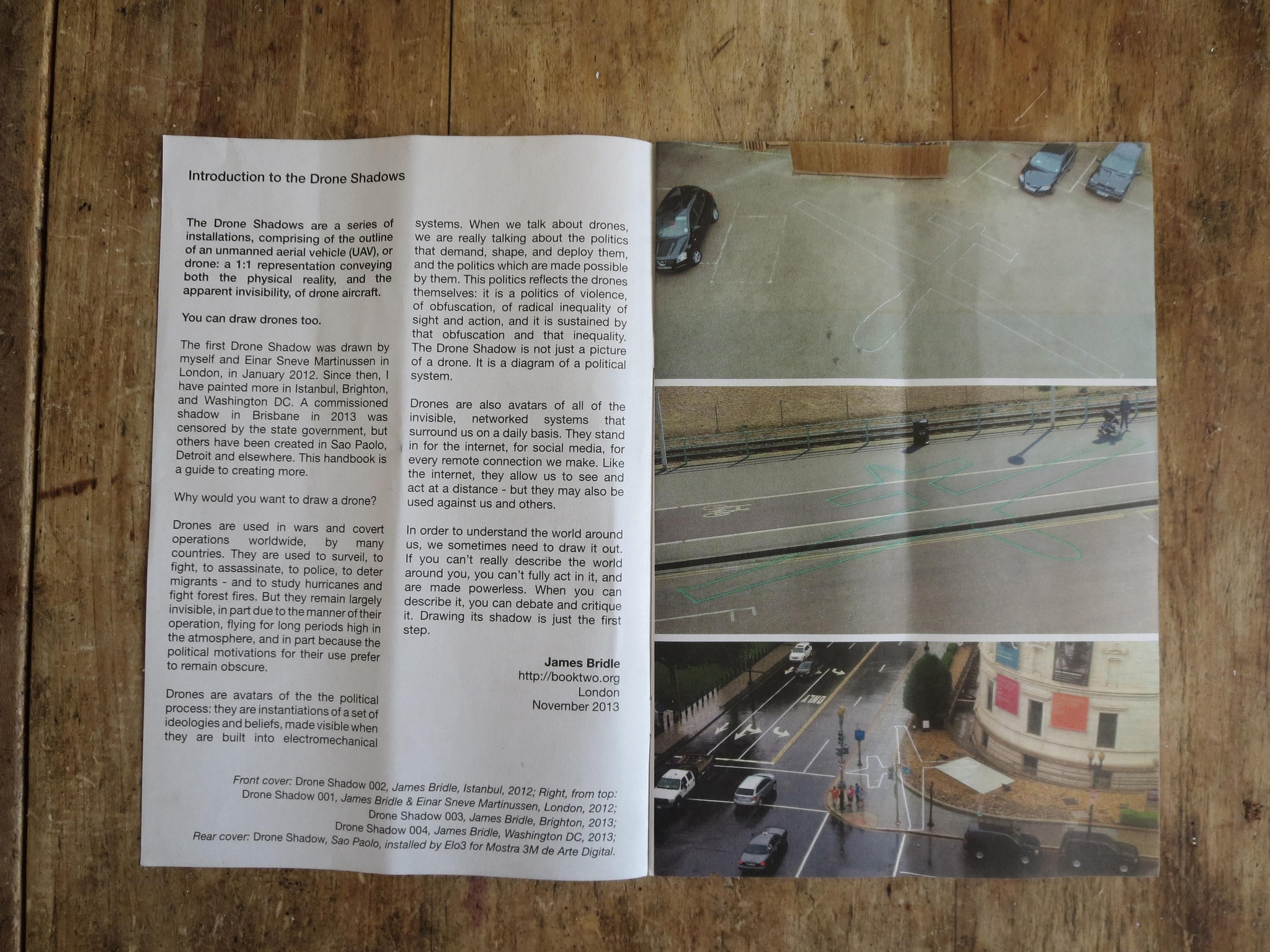
“The drone also, for me, stands in part for the network itself: an invisible, inherently connected technology allowing sight and action at a distance. Us and the digital, acting together, a medium and an exchange. But the non-human components of the network are not moral actors, and the same technology that permits civilian technological wonder, the wide-eyed futurism of the New Aesthetic and the unevenly-distributed joy of living now, also produces obscurantist “security” culture, ubiquitous surveillance, and robotic killing machines.”
“I believe there’s a concrete and causal relationship between the complexity of the systems we encounter every day, the opacity with which most of those systems are constructed or described, and fundamental, global issues of inequality, violence, populism and fundamentalism.
Only through self-education, self-organisation, and new forms of systemic literacy can we counter these currents: programming is one form of systemic literacy, demonstrating the accessibility and comprehensibility of these technologies is another.”

“Seamless Transitions is a visualisation of three spaces of immigration judgement, detention and deportation in the UK. Each of these spaces is unphotographable in the traditional sense, so I used investigative journalism techniques, eyewitness accounts and other research to reconstruct each of them. I then took these plans to Picture Plane, a leading architectural visualiser about whose work I have written at length before. The resultant film – a walkthrough of the virtual environments created by Picture Plane based on research and investigation of real spaces – is a simulacrum that nevertheless reveals a reality, one which has remained hidden behind law and indifference.”
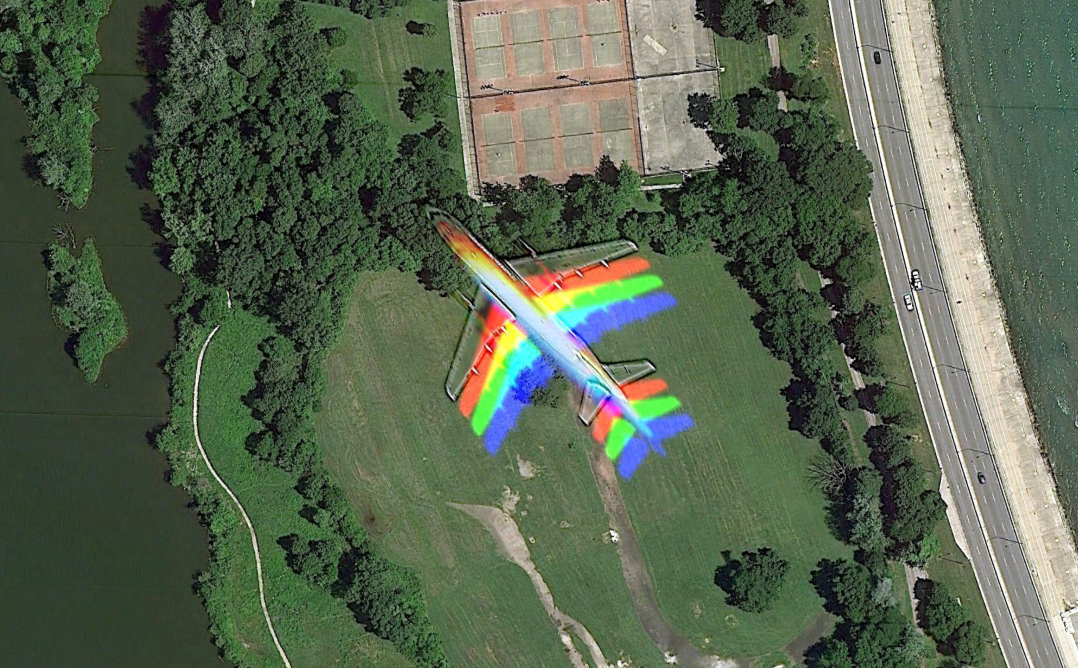
"For me, the Rainbow Plane stands for the moment when we see how technology sees the world, and thus how technology both obscures and reproduces political intent. Just as private aviation is used by power to exceed and evade national and legal jurisdictions, and satellite networks are deployed to measure and surveil the globe, analogous technologies can be used to invert and render visible these relationships.
Like the appearance of secret flights on civilian radar websites, the rainbow plane is a window into the workings of private networks of transit, rendition, surveillance and governance. The rainbow plane is a true “glitch”, where we see not an error, but a glimpse of how systems really function, allowing us to better understand and act within them. An aesthetic which reveals not the surface, but the depth of things."
“[Yet,] in place of computational thinking, we must respond with cloud thinking. Crisis is the new normal. The cloud, however, remains a model of the world, just not the one we have taken it to mean.
The apparent growth of crisis is, in part, a consequence of our new, technologically-augmented ability to perceive the world as it actually is, beyond the mediating prism of our own cultural sensorium. The stories we have been telling ourselves don’t bear out. They’re weak all over. The cloud reveals not the deep truth at the heart of the world, but its fundamental incoherence, its vast and omniferous unknowability.”
Every time you go online, the data you generate is used to make decisions about you. Websites, social media, apps and governments gather data about you to decide how to treat you: what adverts or content to show you, and in what language or format to communicate with you. Algorithms looking at your data decide whether you get shown an advert for a pair of shoes or a foreign holiday; whether the homepage appears in English or Chinese; whether or not you're allowed to watch a YouTube video.
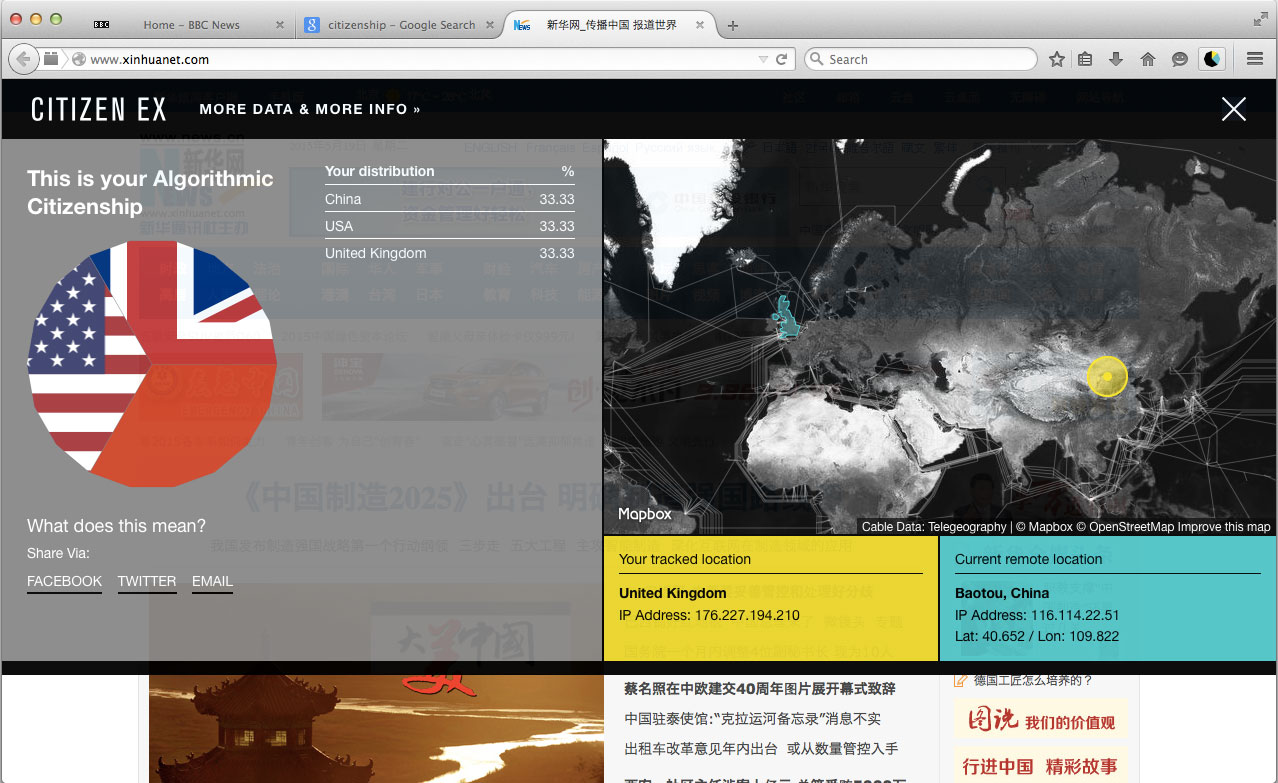
More often, your Algorithmic Citizenship is decided without you being aware of the decision, or the consequences. Government surveillance agencies like the NSA and GCHQ use your Algorithmic Citizenship to decide whether to spy on you. For example, the NSA is not allowed to spy on US citizens, so they use browsing data to assign a percentage score to everyone on the internet. If that score drops below 50% American, then they can record them: different laws apply to them, even if they don't know anything about them except how they behave online. This is also Algorithmic Citizenship.
“Citizen Ex is an extension for web browsers which makes visible the physical infrastructure that underlies the internet, mapping the location of web sites, and visualising the user's algorithmic citizenship. Algorithmic Citizenship is a new form of citizenship, one where your citizenship, and therefore both your allegiances and your rights, are constantly being questioned, calculated, and rewritten.”